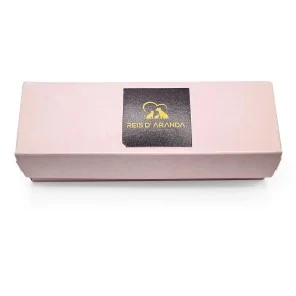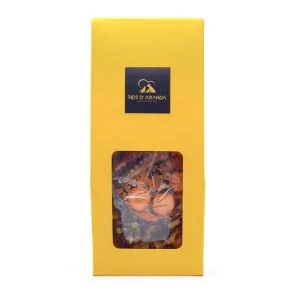Its name says it all: the Vienna blue rabbit comes from Austria. Not only is it beautiful with its shiny blue-grey...
THE SPANISH GIANT RABBIT
INTRODUCTION
Caring for the natural heritage, conserving it and making it known is what unites the breeders of giant rabbits in Spain. This native breed in danger of extinction is, as its name suggests, large in size.
THE ORIGIN OF THE SPANISH GIANT RABBIT
The Spanish Giant rabbit breed was created in Valencia at the beginning of the 20th century. The rabbit breeders involved in its formation wanted to combine the hardiness and good reproductive and maternal characteristics of the Spanish rabbits with the growth qualities and large size of some foreign breeds. For its creation, they crossed females of the Spanish Brown Rabbit breed with males of the Flanders Giant breed, finally obtaining the Spanish Giant breed of rabbits.
The new breed was born as a response to the needs of improvement in the growth of rabbit breeding developed in pens and primitive cages. The breed reached a strong diffusion before the Civil War, although already in the 70's, as a consequence of the importation of more competitive breeds and lines of rabbits, the census of the Spanish Giant decreased drastically. The great promoter and disseminator of the Giant Spanish rabbit was Ramón Crespo, who included important photographs and testimonies in his book ‘Conejos y conejares’ (Madrid, 1925). Crossbreeding and selection were developed by rabbit breeders of the time such as Burgal, Baggetto and Lacomba. This breed was predominant in the family type of rabbit breeding that took place during the 1950s and 1960s.
At the end of the 1980s, the Spanish giant suffered a hard blow, from which it has had a hard time recovering. Previously, it had already experienced the scourge of epidemics, some of them caused intentionally, which added to the introduction of new breeds such as the Californian or the New Zealander, reduced its population alarmingly.
This also had a negative impact on other species such as the lynx and the imperial eagle, which used to rely on rabbits as a basic source of food. However, the efforts of several Valencian enthusiasts to conserve the breed, and the new environmental measures imposed by the Valencian government, have stopped the total extinction of one of the most representative symbols of our country.
The Spanish giant rabbit was included in the Official Catalogue of Spanish Livestock Breeds, as a native breed in danger of extinction, in 2016. The work to prevent the extinction of the species began in 1984 when Professor Marina López, from the Faculty of Veterinary Medicine in Zaragoza, began to recover specimens of this great Spanish rabbit in the countryside, and set up a breeding centre in the Department of Zootechnics with more than 200 pure-bred females.
Today we can say that the future of this native breed in danger of extinction is in the hands of breeders who care for them out of love.
STANDARD OF THE SPANISH GIANT RABBIT
TYPE: Hypermetric, convex and long-limbed breed. It is a bulky animal (85-95cm in length), massive and rounded.
HEAD: Thick, rounded, with a blunt forehead and a markedly curved skull.
EAR: Short and curved, with long whiskers.
EYES: Large, brown (more or less dark), without tinge of black (tawny variety).
EARS: Large, broad, fleshy, ending in a spoon point, carried very straight and never close together.
NECK: Short and thick. In bitches there is a fold of skin in the form of a dewlap.
BODY: Solid, without angulations or protrusions.
FEET: Strong, short and broad. The hind legs are endowed with considerable strength, as is shown especially in males, when they strike the ground with any start or feeling of strangeness.
NAIL: Brown or black, shiny and of even thickness.
TAIL: Quite well developed, thick and close fitting to the body.
COLOURS: Brownish-fawn, without white, grey or black markings. The tone is uniform except for the belly and underside of the tail, which is usually lighter, tending to white. The dirty blond colour (somewhat saffron) denotes lack of selection and degeneration of colour in the breeders.
The grey colour is also admitted, whereas the white colour has been disqualified, it is neither bred nor admitted as belonging to the breed.
HAIR: Short, silky and fine on the flanks.
WEIGHT: 5-7kg in adulthood (+11 months). At 6 months they should have a minimum weight of 3.5kg.
THE HEALTH OF THE SPANISH GIANT RABBIT
The Spanish Giant has an approximate life expectancy of between 5 and 7 years. It is a strong and healthy breed, but due to its weight it can often suffer from pododermatitis.
WHAT IS THE SPANISH GIANT LIKE AS A PET?
The Spanish Giant is a calm breed (much more so than the Flanders Giant) but due to its strength it is essential to socialise it and get it used to being handled, otherwise it is an animal that can kick or bite us with force, which can be dangerous as it is a large and strong animal.
CONCLUSION
Its development and implantation in the fifties gained official favour and its expansion had a national character in many provinces. In the seventies its census and population decreased. At present, its purebred breeding is reduced to nuclei scattered throughout the Peninsula, in Barcelona, Huesca, Burgos, Zaragoza, Malaga and Guadalajara, with an estimated population of 1,500 specimens between males and females.
Leave a comment
Log in to post comments
















